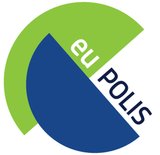Augmented NBS for Cities: Embedding technologies and fostering social inclusion in urban strategies
The experience of NBS in place is now mature with numerous applications. However, the question of the added value in terms of innovation in the so-far applied solutions arises. The special issue of Open Access Elsevier Journal aims to collect best practices on how technologies, in different ways, can enhance the performance and impact of NBS.
Specifically, can technologies augment NBS, towards a more radical symbiosis of green and digital cities? Can we benefit from measuring NBS for developing successful and innovative management and business models of urban green, and support sound decision- and policymaking, which is often problematic to local government? What are the multiple impacts delivered by hybrid green and digital solutions, how to measure them, and eventually how to monetize them?
In particular, the following explorations around technology in and for NBS are relevant for this session:
- Technology in Green: Embedding technologies inside NBS could increase its environmental performance and social impact; for instance, environmental sensors measuring the health of nature and biodiversity; green as urban displays and communication interfaces to people for communicating relevant messages; sensors for co-monitoring campaigns, as part of citizen-science activities around urban greening.
- Technology for Green: outside and beyond NBS per se, technologies can be applied to enhance the impact of NBS in cities; ICT can be used to engage citizens in co-producing and taking care of green (co-maintenance, co-monitoring), thus generating stronger sense of belonging and social bonds within communities, with emphasis on the inclusion of marginalised and vulnerable groups; moreover, mapping technologies such as remote sensing, LiDAR applied to urban green, can support monitoring the overall progress towards greener cities, contributing to assessing the global targets of the 2030 Agenda at the local scale (e.g. localizing SDGs in cities) and reporting on ESG criteria.
Starting from the ongoing applications of two European Projects, CLEVER Cities and VARCITIES, we look for papers presenting scientific methods and innovative products and services enhancing the potential of NBS in the urban context.
You can submit your papers HERE.

Important dates:
The submission portal opens on May 1st, 2022
Full paper submission deadline January 31st, 2023
Short title to select during submission: Augmented NBS for Cities
Currently, the CLEVER Cities project is developing the co-design and co-monitoring phases of the interventions in all Front Runner cities. Possible contributions from this side would look at the use of different technologies in green strategies such as the use of digital surveying in measuring public participation and virtual reality acceptance for the interventions. In one of Milan ULL for instance, a green noise barrier is built up around a train station that will eventually increase environmental and acoustic comfort for the residents around this area. The usage of citizen-science around NBS themes is hence to be looked more in-depth regarding the increase of health, wellbeing, and general public spaces interventions.
The H2020 project VARCITIES is aiming to implement visionary solutions bridging NBS and digital technologies into 8 European cities. The redesign of open public spaces and green areas will be done through co-design and co-creation processes by involving local stakeholders and experts. Every demo case is going to develop a dedicated monitoring system, to collect KPI addressing a wide range of parameters, from microclimate conditions to socio-economic changes or psychological well-being of users. All data from demos, combined with spatial info are going to build digital twins, and the so-called Health and Wellbeing City Platform, to share experiences and insights with other cities. The use of AR/VR and gamification is also foreseen to engage people in societal change towards sustainable behaviors and acceptance of such Visionary solutions, by leveraging the concept of multiple benefits.
Potential topics:
The session of the conference is allocated to the third track of the conference: Tackling what remains to be done: environmental sustainability in cities and regions. Hence, potential topics would look more into environmental sustainability, local governance and possible advancements in citizen-science using technology in urban greening
The focus of special issue related to urban technology used in the field of Nature-based solutions implementation in cities. It expects to attract an international audience of professionals and practitioners that use NBS in the greening strategies in their cities. Moreover, the academics and students can deepen their knowledge around the same topics using the augmented reality techniques for instance towards improving the academic participation in stakeholders’ engagement from a methodological perspective.
Guest Editors:
Israa Mahmoud, Politecnico di Milano, Milan, Italy
Eugenio Morello, Politecnico di Milano, Milan, Italy
Adriano Bisello, Eurac, Bolzano, Italy
Dionysia Kolokotsa, Technical University of Crete, Greece.

